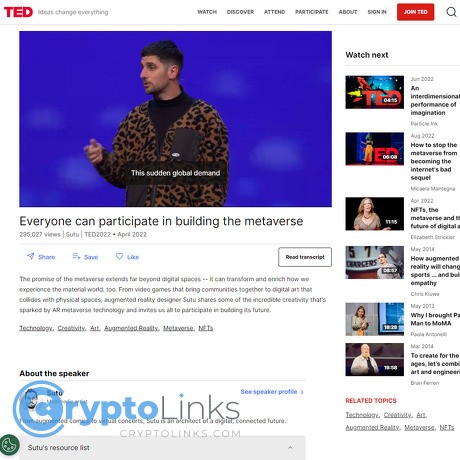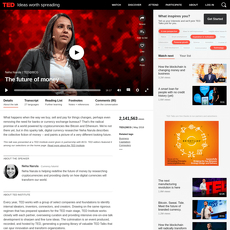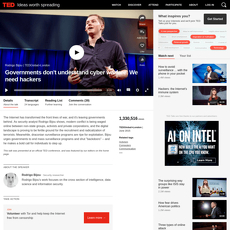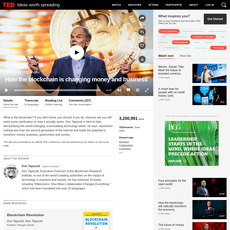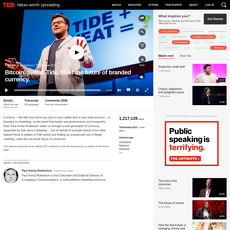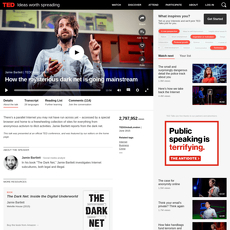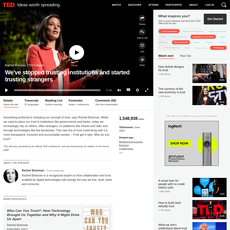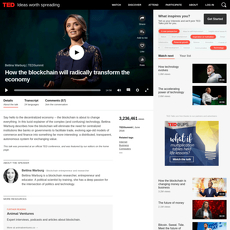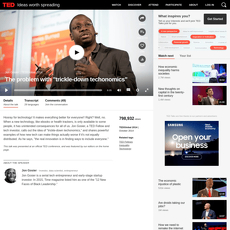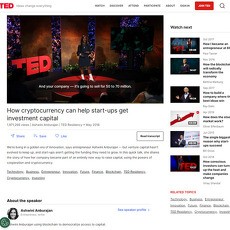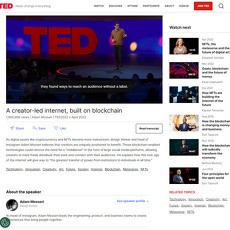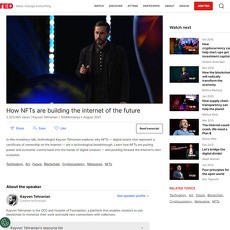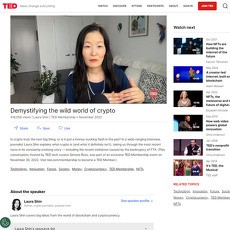Sutu: Everyone can participate in building the metaverse Review
Sutu: Everyone can participate in building the metaverse
www.ted.com
Sutu’s “Everyone Can Participate in Building the Metaverse” — Honest Review Guide + Everything You Need to Know (with FAQ)
Quick question: what if you could help build the metaverse this week without writing a single line of code or buying a $500 headset?
That’s the energy behind Sutu’s TED talk, “Everyone can participate in building the metaverse.” I took his big idea and shaped it into a practical, honest guide for readers of Cryptolinks News who want results, not hype. If you’ve felt priced out, confused, or just tired of buzzwords, you’re in the right place.
“If it isn’t inclusive, it isn’t the metaverse.”
The real problems people face
Most people aren’t blocked by talent — they’re blocked by friction. Here’s what I see every week:
- Gear gatekeeping: Headsets are optional, but the perception is you need one. In reality, most creation tools run in a browser or on a laptop. Even so, cost anxiety keeps people out.
- Jargon soup: Wallets, testnets, glTF, WebXR, royalties, interoperability — it’s a lot when you just want to build something cool.
- Creator ownership worries: A ton of artists want on-chain credit and fair pay. That got shakier in 2023 when several marketplaces softened royalty enforcement, forcing creators to rethink income streams.
- Safety + quality: Newcomers don’t know who to trust. Communities fight spam, rugs, and toxic behavior — which kills momentum fast.
- Platform paralysis: “Which world builder should I pick? Which wallet? Where do I publish?” The fear of choosing wrong causes people to stall.
And here’s an important reality check: most people still haven’t tried VR at all, which means web-first, accessible experiences matter. Pew Research notes that the majority of Americans haven’t used VR, and only a small slice use it regularly. If the metaverse relies on headsets, it won’t grow. If it runs on the open web and phones, it can.
The promise: a simple, practical way forward
I’m going to translate Sutu’s message into a set of clear moves you can take — whether you’re an artist, a community builder, a tinkerer, or just metaverse-curious:
- Beginner-friendly tooling: Browser-based builders and mobile-ready platforms so you can start this week.
- Ownership without headaches: When to use a wallet, how to keep it safe, and how to keep fees low with L2s (explainer).
- Low-cost publishing: How to ship tiny scenes, gather feedback, and iterate fast — no VR rig required.
- Trust signals: Practical safety checks to avoid scams, rugs, and burnout.
Who this is for — and why listen
This guide is built for curious beginners, indie creators, community managers, and investors who want signal over noise. I test crypto and creator tools daily and publish honest reviews for readers at cryptolinks.com. The goal: cut through jargon, highlight what actually works, and spotlight safe, sustainable ways to participate.
What you’ll get from this guide
Here’s how I turn Sutu’s big idea into something you can use right away:
- A plain-English summary of the talk: What he said and why it matters for real people.
- Action paths by role: Artists, community leads, developers, supporters — what to do next.
- Tools that won’t waste your time: WebXR/A‑Frame starters, social world builders, and mobile-friendly options.
- Wallet and identity basics: Safe setup, testnets, and handle consistency across platforms.
- Creator economics and ethics: Smart ways to earn, credit remixers, and keep communities healthy.
- Safety must‑knows: Consent rules for co-creation, moderation frameworks, and red flags to avoid.
- FAQ with straight answers: Do you need crypto? How do you earn? What’s the cheapest way to start?
If you’ve ever thought, “I’d join if someone just showed me where to begin,” you’re exactly who I had in mind. So, what did Sutu actually say — and how does it turn into steps you can follow this week?
Sutu’s TED Talk in plain English: what he said and why it matters
Here’s the heart of Sutu’s message, without jargon: the metaverse won’t be “delivered” by a handful of tech giants — it grows when regular people co-create. When we publish small worlds, remix assets, host events, and open doors for others, the culture deepens. That’s the promise: participation over permission.
“Worlds aren’t just places we visit — they’re things we build together.”
Why this matters right now:
- Participation scales faster than top-down production. There are more makers than studios, and they ship more often.
- Accessibility unlocks talent. Browser-based tools, AR filters, and no-code builders let anyone contribute — no pricey headset required.
- Community-led worlds feel alive. When people own a piece of the place (socially or on-chain), they show up, maintain, and invite others.
And this isn’t wishful thinking. AR is already mainstream — Snap has reported that over 250 million people engage with AR every day. Roblox has publicly shared that its daily active users surpassed 70 million in 2024. People are already worldbuilding at scale — often with simple tools and a phone.
Key takeaways from the talk
- Inclusive creation beats polished gatekeeping. Invite contributions at many skill levels: artists, tinkerers, translators, moderators, storytellers.
- Art + tech is the magic combo. Visual style, sound, and story turn “3D spaces” into places people want to return to.
- Shared spaces = shared culture. When communities co-create, the world reflects their values, not just a roadmap.
- Your small role counts. A filter, a tiny scene, a feedback thread — the compounding effect is real.
Emotionally, this hits a nerve for a lot of us who felt priced out or late. You’re not late. The on-ramps are finally visible, and the best worlds are still under construction.
Real examples that ground the vision
Sutu points at practical formats, not just concepts. Here’s what the “everyone can participate” pattern looks like in the wild:
- Interactive art that anyone can trigger — Think murals or posters that come alive via AR on your phone. Sutu’s own collaborations like EyeJack and the Prosthetic Reality AR art book showed how dozens of artists could publish animated pieces people unlock with a scan.
- Community-driven galleries — Browser worlds in platforms like Oncyber or Spatial where curators rotate shows, invite live DJs, or host creator spotlights. Zero headset needed, and templates make setup quick.
- Social sandboxes built by players — Worlds in VRChat, Roblox, or Fortnite Creative where the most-loved maps are born from community jams, not studio mandates.
- Neighborhood-style worldbuilding — Small parcels and plazas with interoperable assets (glTF, VRM) stitched together, so different creators can extend the same space over time.
The pattern is consistent: simple tools + shared effort = meaningful places people care about.
What this means for crypto folks
Here’s where the Web3 layer quietly supercharges Sutu’s point about participation:
- Ownership without losing control. Minting can provide on-chain provenance and programmable rights. Use standards like ERC-721/1155, and reference EIP-2981 for marketplace-enforced royalties where supported.
- Community is the moat. Tokens, badges, or POAPs can reward real contributions (attendance, playtesting, moderation), not just speculation.
- Open standards prevent lock-in. Publish assets in glTF and avatars in VRM where possible so creators can carry their work across worlds.
- Your wallet and contributions form your identity. Names via ENS and attestations via emerging tools like the Ethereum Attestation Service help communities verify who built what, when.
- Clear licensing keeps collaboration safe. Pair mints with licenses (e.g., CC BY, CC0) so remixers know the rules and credit flows transparently.
This is the connective tissue: the social layer builds culture; the crypto layer preserves authorship, tracks contributions, and aligns incentives so people keep showing up. You feel it when a world credits you by name, your wallet holds proof you helped, and the door to the next build is already unlocked.
So the question becomes practical: if “everyone can participate,” what’s the easiest path for you — creator, community lead, tinkerer, or curious explorer? In the next section, I’ll map the fastest routes and the smallest useful thing you can ship this week without a headset. Ready to pick your lane?
How “everyone” can actually participate (pick your lane)
If you’ve ever felt like the metaverse is a VIP club guarded by headsets and jargon, you’re not alone. The trick is to pick a lane you actually enjoy and ship something small. You don’t need permission, and you don’t need a big budget — you need a repeatable way to contribute.
“Small contributions compound into culture.”
Quick reality check that favors you: most people lurk. The 90-9-1 rule shows only a tiny slice creates regularly (Nielsen Norman Group). That means even modest, consistent output stands out.
For creators and artists
No VR headset required. Start with lightweight formats and keep your first piece under 4 hours of work-from-blank-canvas to publish.
- 3D art, fast:
- Sketch or collage your concept, then block it out in Blender using free kitbash assets. Export to glTF.
- Drop your piece into a browser gallery like Oncyber or Spatial and publish a shareable link.
- Optional: If you want on-chain provenance later, keep a hi-res file and a short description ready for minting.
- AR filters that travel:
- Use Lens Studio or Meta Spark to create a face or world effect using your art.
- Include a small call-to-action: “Tag me when you use this” to spark word of mouth.
- Interactive micro-scenes:
- Remix a template in A‑Frame (WebXR) and swap in your assets. Host free on Glitch or CodeSandbox.
- Add one interaction: a clickable object that reveals a story snippet or audio.
- Get seen without spamming:
- Post a 10–20 sec screen recording, the world link, and one clear ask: “Try the door puzzle and tell me where you got stuck.”
- Cross-post where creators actually hang out: Farcaster, Lens, and Discord channels tied to your tool of choice.
Why this works: making the first action easy increases follow-through (see the Fogg Behavior Model). Your goal is momentum, not masterpiece.
For community leaders and contributors
Your superpower isn’t hype — it’s rhythm. Create a predictable beat people can show up for, and give them a reason to return.
- Run simple events that don’t burn you out:
- Host a 30–45 minute “show & ship” weekly in Spatial or a dedicated Oncyber room: 3 creators, 5 minutes each, 2 minutes Q&A.
- Use one pinned Google Form for feedback and speaker sign-ups. Keep the same link every week.
- Set clear, humane guidelines:
- Pin five rules max: consent for screenshots, no hate, no scams, tag NSFW, constructive critique only.
- Publish how moderation works and what happens after a report. Clarity lowers incidents and churn (consistent with industry moderation research).
- Reward the behavior you want:
- Issue POAPs for playtesters and presenters; use small roles/badges for repeat helpers.
- Post weekly micro-bounties via Dework or Wonderverse: “Translate guidelines,” “Clip a 60s highlight,” “Write a 5-bug report.”
- Playtesting that actually helps creators:
- Share a 10-minute script: find the portal, pick up item, trigger music, exit. Time each task. Note where people stall.
- Use a simple bug template (Steps, Expected, Actual, Screenshot, Device) in Notion or GitHub Issues.
Pro tip: consistent cadence beats massive one-off events. People trust what’s on the calendar.
For developers and tinkerers
Pick a small, boringly useful thing. Ship it with a demo and a copy‑paste snippet. That’s how you become a go-to dev in any creator community.
- Where to start:
- WebXR (MDN) for browser XR foundations.
- A‑Frame for declarative scenes; Three.js for deeper control.
- No-code world builders (Oncyber, Spatial) if you want to script within hosted scenes.
- Weekend projects that add real value:
- A‑Frame component: “Press E to toggle day/night” with baked lighting presets.
- Three.js pathfinding demo with a simple NavMesh.
- glTF optimizer CLI using gltfpack/meshoptimizer + docs on how artists can keep file sizes under 5 MB.
- “Teleport portals” prefab that reads destinations from a JSON file so non-devs can edit.
- Privacy-friendly analytics snippet that logs just session count and interactions to a Google Sheet.
- Ship like this:
- Keep it under 150 lines; add a GIF demo; one-click remix on Glitch.
- MIT or Apache-2.0 license, a crisp README, and two “Good first issues.”
- Announce with a short video and a real use case you tested with an artist.
Why this works: projects with clear docs and small issues attract more contributors (a pattern seen in the GitHub Octoverse). You’re lowering the activation energy for the next person.
For explorers, collectors, and supporters
You’re the social engine. You help good work find its audience and signal what’s worth building next — even on a tiny budget.
- Join and test with intent:
- Pick two worlds a week to explore. Spend 10 minutes each. Leave timestamped, kind, specific feedback: “At 00:42 the lava floor didn’t animate on mobile.”
- Screenshot, circle the problem area, and note your device model and browser.
- Amplify creators without being noisy:
- Quote-post their link with what you loved and one improvement. Recasts/reposts with context beat plain retweets.
- Invite two friends to a live preview. Warm bodies in a room are fuel.
- Support on any budget:
- Drop small tips, buy low-cost editions, or collect free mementos when offered.
- Offer a skill: “I can edit your 30-second trailer,” “I can translate your captions.”
- Vote and steward:
- Read one Snapshot proposal a week (Snapshot is gasless) and comment with two sentences of reasoning.
- Ask for progress updates before funding the next thing. Accountability scales culture.
- Stay safe while helping:
- Use a burner wallet for testing and never sign transactions you don’t understand.
- Stick to official links posted in public channels. Avoid “support” DMs offering fixes.
If you’ve been waiting for a sign to start, this is it. Which lane are you taking this week — and want a curated list of tools and platforms that won’t waste your time? That’s exactly what’s coming next.
Tools, platforms, and on-ramps that won’t waste your time
You don’t need a headset, a grant, or a mythical “dev team.” You need a starter stack that’s fast, free (or close), and friendly to mistakes. Below is the setup I use when I want to get something live this week — not someday.
“People support what they help create.”
Create and publish
I judge tools by three things: low friction, wide reach (mobile/web), and real ownership options. Here are the ones that consistently deliver:
- Oncyber — Free, browser-based spaces. Wallet optional to start. Great for galleries, simple interactive rooms, and events. Mobile-friendly. Drag-and-drop assets; supports glTF/GLB.
Good for: First scene in under an hour, portfolio rooms, collaborative showcases. - Spatial — Web + iOS/Android + VR. Live events, avatars, audio zones, templates. Easy to co-host community sessions.
Good for: Meetups, lightweight game-y spaces, cross-device communities. - VRChat (PC/VR) — Huge culture. Deeper interactivity with Unity, but more setup. If your audience lives here, it’s worth it.
Good for: Immersive social worlds, performance art, scripted interactions. - Roblox Studio (free) — Massive reach, Lua scripting, instant play on mobile/desktop. Discovery is tough but the audience is unmatched.
Good for: Playable prototypes, mini-games, education. - Fortnite Creative (UEFN) — Unreal power with Fortnite distribution. Higher learning curve; insane polish potential.
Good for: Premium-feel maps, brand collabs, creator economies inside Fortnite. - A‑Frame / Three.js / WebXR — Build in HTML/JS, publish anywhere on the web. Total control, fast iteration, no gatekeepers.
Good for: Custom interactions, learn-by-shipping, open web distribution.
Hosting that “just works” (free):
- GitHub Pages, Vercel, Netlify — Push, preview, ship. Perfect for A‑Frame/Three.js sites.
- NFT.Storage / Pinata — IPFS pinning when you want durable content addressing.
Quick launch recipe (45–90 minutes):
- Export your 3D assets as GLB (Blender → glTF 2.0 works great).
- Open Oncyber or Spatial, pick a template, drag in GLB files.
- Add 3–5 hotspots or info cards. Keep movement simple.
- Invite 5 friends on mobile + desktop to walk it with you live.
- Fix the top 3 issues they point out. Publish. Share the link.
Wallets and identity
Keep this boring and safe. Your wallet is both your login and your reputation in many spaces.
- Hardware for storage: Ledger Nano S Plus or Trezor Model One. Cold for long-term, not day-to-day clicks.
- Hot wallet for creation: Rabby (great approval warnings), MetaMask, or Coinbase Wallet. Use a separate “creator” wallet from your savings.
- Smart accounts (optional): Safe on L2s for team custody and recoverability.
- Gas on a budget: Build and mint on L2s like Base, Optimism, Arbitrum, or Polygon. Fees are often cents, not dollars (check l2fees.info).
- Test first: Use Sepolia and L2 testnets (Base/Optimism Sepolia). Grab test ETH from reputable faucets like Alchemy Faucets.
- Phishing defense: Seed phrase offline, never typed into any site. Bookmark official URLs. Before you sign, read the request. Revoke shady approvals with revoke.cash.
- Coherent identity: Claim an ENS name, set your avatar, and add your Farcaster/Lens/Twitter to ENS text records. Use the same handle everywhere. It signals reliability.
Workflow example: I use a “hot” wallet on Base for publishing and a hardware wallet for storage. I test contracts on Sepolia, bridge small amounts through official bridges, and keep revoke.cash bookmarked. My ENS points to my site and socials so collaborators know it’s me.
Collaboration and community spaces
Find the people who will actually build with you — and give them credit they can carry forward.
- Discord — Use Channels + Forums for feedback threads. Bot stack: Sesh for events, Guild.xyz for roles/permissions, Forms or Typeform for structured feedback.
- Farcaster — Real builders hang out here. Post WIP builds in channels like /build, /3d, or your project’s channel. Frames = instant feedback loops.
- Lens — Social graph for creators; useful to seed early collector communities.
- GitHub — Repos for worlds and sites. Track issues, label good-first-issues, and credit contributors in the README.
- Proof of contribution: Attest with Ethereum Attestation Service (EAS), issue POAP badges for playtesters, or use GitPOAP for code contributions. Task boards: Dework, CharmVerse.
10‑day collab sprint (repeatable):
- Day 1–2: Post a tiny brief with your definition of done + file formats (GLB, PNG). Create a task board.
- Day 3–5: Pair-build in short calls. Screen-share WIP in Discord. Tag blockers early.
- Day 6: Playtest live in Spatial/Oncyber for 30 minutes. Record notes.
- Day 7–8: Fix the top 5 issues. Merge PRs. Attest contributions (EAS/POAP).
- Day 9–10: Publish an update thread on Farcaster + Discord. Credit every contributor by handle and wallet.
Shipping small, shipping often
Small releases beat big rewrites. Two data points back this up:
- Usability with 5 testers: Research from Nielsen Norman Group shows you uncover the majority of UX issues with just five users. Source: NN/g.
- Frequent releases win: DORA’s software performance studies link small batch sizes and high deployment frequency to better outcomes. Source: DORA 2023.
Release loop I swear by:
- Prototype: One-room scene or one mechanic. Under 1 week.
- Test: 5–7 people on different devices (low-end Android if possible). Capture FPS and load time.
- Measure: Add Plausible for privacy-friendly analytics and Sentry for errors if you’re on the open web.
- Iterate: Fix only the top 3 issues per cycle. Ship the patch. Write a 4‑line changelog.
- Scale: When people return twice, add one new interaction or one new room — not five.
Performance guardrails: Keep textures under 2–4 MB per scene, use GLB + Draco compression, cap draw calls, prefer baked lighting. Fancy is fun; fast is stickier.
One last thing before we go bigger: when assets start to move between worlds and money changes hands, who owns what — and how do you keep it fair? Let’s untangle ownership, money flows, and ethics next.
Ownership, money flows, and ethics in a shared metaverse
Creative work deserves fair pay, clear credit, and portable identity. If we get those three right, the metaverse doesn’t become another walled garden — it becomes a living culture that pays its builders, not just its platforms.
“Open worlds thrive when credit is currency, consent is the default, and exits are painless.”
Creator economics that make sense
Here’s how I’d set up money flows that respect creators and reward participation — without locking anyone in.
- Primary sales that don’t punish fans: Use low-cost mints (L2s) and editions. Zora keeps minting simple and adds protocol rewards; Manifold lets you customize drops and splits.
- Royalties (be realistic): The market moved toward optional royalties; a Galaxy Digital study found creator royalty payments fell ~94% from peak in 2023. If royalties matter to you, design for them:
- EIP‑2981 standardizes royalty info, but it’s not enforcement.
- ERC‑721C (enforceable royalties) or marketplace allowlists can help, with trade-offs in openness.
- Use 0xSplits for automatic, on-chain splits across collaborators and community wallets.
- Transparent licensing that encourages remix: Be explicit. Can’t Be Evil licenses (a16z) or CC0 make reuse clear. CC0 projects like Nouns exploded with derivatives because they removed legal friction.
- Credit the remixers: On-chain attribution + revenue splits drive network effects. When someone extends your avatar rig or scene, auto-route a % back to the original and the remix. It’s goodwill that compounds.
- Diverse income, not one lever: Combine primary sales, commissions, tips, grants (Gitcoin), event tickets, and protocol rewards. Treat royalties as upside, not the plan.
Quick setup I’d use: Mint on an L2 with EIP‑2981 metadata, wire 0xSplits to collaborators and a community fund, apply a clear license (CC0 or CBE), and publish a short “how you can remix this” note with source files.
Open standards and interoperability
If your art, avatars, or spaces can travel, you gain audience. If they can’t, you’re renting.
- 3D assets: Use glTF 2.0 with Draco geometry compression and KTX2/Basis textures for tiny files. Keep rigs and materials clean so they import everywhere.
- Avatars: VRM is widely adopted for humanoids across social apps.
- Experiences: Build with WebXR/OpenXR so scenes run in browsers and headsets with one codebase.
- Identity and login without lock‑in: Map your handle to ENS, authenticate with Sign‑In with Ethereum (EIP‑4361), and connect via WalletConnect. That keeps your identity portable across worlds.
- Storage that lasts: Put media on IPFS (pin with Pinata or Web3.Storage) or Arweave. Avoid single‑point failure URLs.
- Community best practices: Track interop work via the Open Metaverse Interoperability group; following their threads today saves porting headaches tomorrow.
Rule of thumb: If you can’t export it, you don’t own it. If you can’t log in without the platform, you don’t control your identity.
Safety, moderation, and trust
Open worlds don’t work without guardrails. Healthy communities ship faster because people feel safe to contribute.
- Consent-first creation: Don’t scan or upload anyone’s face, voice, or space without written consent. For co-creation, add a simple checkbox flow: “I agree to share and license my contribution under X.”
- Clear, short codes of conduct: One page everyone can understand: what’s allowed, what’s not, and how reports are handled. Enforce consistently.
- Moderation you can actually run:
- Automate the basics (spam filters, link scanning, new-user rate limits).
- Use rotating, lightweight mod shifts to avoid burnout.
- Publish strike rules and an appeal path.
- Transparent treasuries and decisions: Put funds in a multisig like Safe, publish budgets, and use Snapshot for tokenless voting if you want low friction.
- Rug-pull and scam red flags:
- Urgency + guaranteed APRs + unverified contracts.
- Hidden/upgradeable proxies with a single admin key and no timelock.
- Mint links only from official domains; test with tiny amounts.
- Regularly revoke approvals via revoke.cash.
- Audit and openness: Prefer projects with verified source, third‑party audits, and public roadmaps. If the team can’t explain token economics in one paragraph, walk away.
Practical safety pack: official links only, hardware wallet for high-value assets, revocations monthly, and a public “how we moderate” post pinned in your community.
Sustainability and accessibility
Good ethics scale your audience and shrink your footprint. That’s not PR — it’s smart design.
- Pick efficient rails: After Ethereum’s Merge, energy use dropped by ~99.95%. Add an L2 like Base, Arbitrum, Optimism, or Polygon to trim costs and emissions per transaction.
- Make scenes lightweight: Budget polycount, stream assets, and compress everything (Draco + KTX2). Aim for < 5s first interaction on mid-range mobile.
- Design for many, not few: At least:
- Readable color contrast and scalable text.
- Captions and alt text for media.
- “Reduce motion” and “low graphics” toggles.
- Remappable controls and keyboard-only navigation.
- Why it matters: The WHO estimates 1.3 billion people live with significant disability — about 1 in 6 of us. Accessibility isn’t a niche; it’s the audience.
Speed trick I love: Ship two builds — “Standard” and “Lite” — and remember that a fast, inclusive world earns more return visits than a heavy one with film-grade shaders.
Want the short answers on royalties, wallets, cheap ways to start, and staying safe without paranoia? I’ll tackle the most common questions next — the ones people DM me every week.
Quick FAQ: the questions people ask before jumping in
What is Sutu’s core message in this talk?
He’s saying the metaverse isn’t a product you buy; it’s a culture you help build. Small, everyday contributions—art, moderation, feedback, tiny scenes—compound into shared worlds. You don’t have to be a studio or a senior engineer to matter.
Think “participation first,” not “perfect tech first.”
Do I need a VR headset or deep technical skills?
No. A browser is enough. Tools like Oncyber and Spatial let you build or host spaces with templates. If you want to tinker, A‑Frame and Three.js run in the browser via WebXR, so people can join from phones and laptops.
Headsets are optional. In fact, industry surveys consistently show most people still access 3D/immersive content on non‑VR devices (see the public Steam Hardware Survey for a reality check on VR share).
- Zero-code start: Use an Oncyber template, drag in a glTF scene, share a link.
- Low-code start: Fork an A‑Frame “hello world” and swap assets.
Is crypto required to participate?
Not at all. You can create, host, and collaborate off-chain. Crypto becomes useful when you want on-chain ownership, programmable royalties, or permissionless access passes.
- Off-chain route: Host a space on Spatial or Oncyber, accept tips via Stripe/PayPal/Ko‑fi.
- On-chain route: Mint access badges or collectibles, use a wallet, track provenance publicly.
How do creators actually earn?
Multiple paths work; the reliable ones stack a few of these:
- Direct sales: 3D assets, scenes, and collectibles via marketplaces (on-chain with platforms like Zora or off-chain through Gumroad).
- Commissions: Custom worlds or brand activations; start with small scope (a room, a filter, an installation).
- Events: Ticketed workshops, guided tours, and exhibitions in Spatial or browser-based worlds.
- Tips and memberships: Ko‑fi/Patreon for recurring support; token-gated clubs if you’re on-chain.
- Grants and public goods: Programs like Gitcoin Grants or Optimism Retro Funding reward useful tools, education, and infrastructure.
Reality check: Royalties help but they’re not guaranteed. Many markets don’t enforce them consistently. Treat royalties as upside, not a core salary.
What are the risks and how do I avoid scams?
Most losses come from rushed clicks and fake links. Slow down and build a routine:
- Use official links only: Navigate from verified accounts or docs. Bookmark them.
- Protect your seed phrase: Never paste it, never share it. Consider a hardware wallet for valuables.
- Test small first: Send tiny transactions or use testnets before going live.
- Beware DMs and “urgent mints”: Scammers love pressure tactics; real teams don’t need you to hurry.
- Prefer audited/open tools: Read docs, check GitHub, and scan community feedback before connecting your wallet.
Helpful primers: MetaMask Safety Guides, Ledger Academy.
What’s the cheapest way to start?
Build small with free tools, then layer in crypto only if it adds clear value.
- Free build/host: Oncyber or Spatial templates; A‑Frame for simple WebXR scenes.
- Use testnets: Sepolia or Holesky to practice contracts and mint flows at zero cost.
- Pick low-fee L2s if needed: Base, Polygon, or Arbitrum keep gas low.
- Ship tiny: One room, one interaction, one idea. You’ll learn faster and avoid waste.
Starter resources I recommend
- The talk: Sutu on TED (watch + transcript) — search “Everyone can participate in building the metaverse” on TED.com for the official page.
- No-code world builders: Oncyber, Spatial.
- WebXR foundations: WebXR Device API, A‑Frame Docs, Three.js Docs.
- Wallet safety: MetaMask Help Center, Ledger Academy.
- Positive builder communities: Farcaster (creator/dev channels), A‑Frame GitHub, Three.js Forum.
Want a dead-simple 7‑day plan to launch your first scene, get feedback, and not burn out? Keep going—I’m about to lay it out step by step.
Your next steps: pick a lane, ship something small, and meet your people
A simple 7-day starter plan
Here’s a one-week plan that gets you from zero to a tiny, public experience — with real feedback, not guesswork.
- Day 1 — Pick your lane + write the one-line promise. Choose a tool you’ll stick with for 7 days (e.g., Oncyber or Spatial for a browser world; A-Frame for a simple WebXR scene). Write a single sentence to guide the build: “A 60-second gallery where visitors trigger music by stepping on tiles.”
- Day 2 — Build the smallest version possible. One room, one interaction, one purpose. Keep art under 10 MB total. If you’re using 3D, compress assets with gltfpack (meshoptimizer) so it loads fast on phones.
- Day 3 — Put it online (unlisted) and invite 5 testers. Share a private link with five people who match your target audience. Give them a 3-question form:
- What confused you?
- What did you like?
- What should I fix first?
Why five? Usability research from Nielsen Norman Group shows testing with five users surfaces the majority of core issues. Source: NN/g. - Day 4 — Fix the top 3 issues, nothing else. Prioritize clarity: spawn point, lighting, instructions, mobile controls. Add a 1-sentence intro note right in the scene: “Move to the glowing pad to start the music.”
- Day 5 — Add one tiny delight. A sound, a particle pop, a simple collectible, or a teleport marker. Don’t add a second feature. Polished small beats messy big.
- Day 6 — Public release + 15-minute tour. Publish, then host a short live walkthrough at a set time. Record a 20–30 second screen capture (GIF/mp4) so people see it before clicking.
- Day 7 — Post-mortem + backlog. Write what worked, what didn’t, and the single change you’ll ship next. Keep a “Not this week” list so scope stays sane.
Rule of thumb: ship something someone can try in under 60 seconds, on a mid-tier phone, without instructions.
If you want to attach on-chain ownership later, simulate first on a testnet (no rush). Your first win is proof that people care.
Share and get seen (without the spam)
Visibility comes from clarity and generosity, not link blasts. Aim for helpful posts that invite action.
- Lead with a native preview. Post a short GIF/video of the experience in the feed. Add alt text for accessibility and reach.
- Tell a one-sentence story. “I built a 60-second sound gallery this week; can you break it for me?” Clear ask beats hype.
- Ask for one thing. “Try on mobile and tell me where you got stuck.” Specific requests get specific replies.
- Tag communities that care. Examples: #WebXR, #AFrame, #SpatialIO, #Oncyber. On Farcaster, try channels like /metaverse or /creativecoding; on Reddit, look at r/WebXR, r/virtualreality, r/3Dmodeling; in Discord, use each platform’s “Showcase” channel.
- Trade value for attention. Share a short behind-the-scenes clip, a snippet of code, or your glTF compression settings. People are more likely to help when they learn something too.
- Reach out to five people personally. DM builders who shipped similar projects: “30-second test? I’ll return the favor.” Private, respectful, no mass pings.
- Close the loop. 24–48 hours later, post a mini-changelog: “Fixed mobile spawn and added audio cue based on your notes.” That’s how you build trust.
Want basic tracking? Use a clean shortlink or a campaign parameter so you know where testers come from. A simple GA4 campaign builder like this works fine.
Keep learning without burning out
- Timebox. Cap daily build time (e.g., 90 minutes). Curiosity scales; energy doesn’t.
- One feature per week. Anything more blooms into bugs and fatigue.
- Ship on a predictable day. Rhythm beats motivation. A weekly cadence compounds.
- Run tiny tests often. Five testers, 10 minutes each, every release. Again, NN/g’s “five users” guideline saves time and catches the big stuff.
- Protect your setup. Bookmark official docs only, verify links, and never sign wallet messages you don’t understand. Keep minting for later; focus on playability now.
- Track small wins. A quick win log boosts momentum. This isn’t fluff: research on progress and motivation (HBR’s “The Power of Small Wins”) shows frequent, visible progress keeps teams moving. Source: Harvard Business Review.
Conclusion: My honest take
The people who show up shape what the metaverse becomes. Not the loudest folks, not the biggest budgets — the consistent shippers. You don’t need a headset, a token, or a perfect plan. You need one clear sentence, one tiny scene, and five honest testers.
Build small. Share humbly. Fix fast. Repeat.
I’ll keep tracking trustworthy tools, creators, and communities at cryptolinks.com so you’ve got a clean feed to pull from as you grow. If you ship something this week, send me the link — I want to see it.

